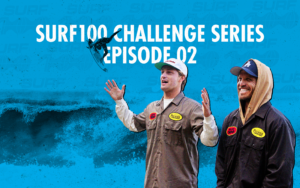Offshore Wind Farms And Protected Surf Sites Collide In NZ
New proposals for a Nationally Significant Surfing Area may hinder the production of offshore wind farms in New Zealand.
New Zealand is home to some of the world’s best, although a little cold, surf spots in the world. While Raglan, the near-hackneyed left hand point break is one of the most known NZ spots, those two islands in the Tasman have significantly more to offer.
Recently, one region home to some of these waves may soon receive proper external validation. According to Stuff NZ, the Taranaki Regional Council is proposing a Nationally Significant Surfing Area which would include around 20 spots between “Kaihihi Road to Cape Road in South Taranaki”; there is also talk of adding another 120 spots to receive similar “protections”.
So what are these protections exactly?
According to Craig Williamson, the regional councillor and Surfing Taranaki chief executive, “The principle is that the quality of a surf break isn’t degraded by any development or anything else, so obviously one of the key factors involved in the quality of a surf break is the amount of swell that reaches it.”
In Williamson’s mind, these protections come into conflict with plans of building offshore wind farms in the region. “Whoever is developing these plans or projects would have to find a way to mitigate any effect on swell corridors and surf breaks before they proceeded or they wouldn’t be allowed to do it.” Williamson told Stuff.
The aforementioned wind farms are two projects outlined in the Venture Taranaki (the regional tourism group for the Taranaki area) document; one of these is a 200-megawatt farm and the other an 800-megawatt farm. In layman’s terms, 30 and 120 square kilometre regions filled with wind turbines. A prospect which sounds concerning to anyone worried about swell reaching the region’s shoreline.
There is however no consensus on whether such farms, if they were to go ahead, would impact ocean swell’s or not. While a “120-square kilometre wind farm” seems intuitively detrimental to the size of incoming swells, more precise details provide some relief.
The turbines would be spaced around one-kilometre apart and according to Peter McCoomb, an oceanographer in support of surf break protections, there’s little evidence to suggest wind farms of this nature would significantly alter ocean swells.
“So typically you find that swell waves will just pass right through an array of offshore wind turbines with very little attenuation.” McCoomb told Stuff. “In fact you probably wouldn’t even notice it from the shore, so they are not going to block the swell energy getting into the surf breaks. That simply isn’t going to occur.”
There have however been similar concerns in other surfing regions, with some models predicting up to a 22% loss in wave height if offshore farms were to be built.
Back in 2016, Surfers Against Sewage (SAS), fought plans to build an offshore farm near Brighton after models by the proposed developers suggested a 22% impact on swell heights reaching the shoreline. SAS however was successful in getting the proposed developers to shift their plans so that the maximum wave height reduction was a mere 3%. A result which SAS saw as a “win-win” with the renewable energy project going ahead without a significant impact on their waves.
While precise evidence is limited – the available scientific literature is jargon laden and not specific to swell’s which interested in surfing – offshore wind farm’s do not seem to present an unavoidable threat; Peter McCoomb does however believe other ocean-based watersports such as kite and windsurfing may be impacted as he expects offshore wind farms to change natural wind speeds in surrounding regions.
“There might be some localised reduction in wind for some areas that might cause some concern for some of the kite surfing and wind surfing community, but I think once again that could be quite localised and that would be worthy of further scrutiny.” McCoomb told Stuff. Not that many other surfers would complain about reduced local windspeeds, particularly in the brisk and gusty coasts of NZ.
The plans are still being discussed at this stage – for both the Nationally Significant Surfing Area and wind farms – but it is expected to be some time before much progress is made due to the ongoing Covid-19 situation. Despite this, early indications are that the wind farm projects will be pursued, particularly in an effort to generate needed economic growth in the region after the fiscal impacts of the novel-coronavirus.
We’ll keep you posted when new information floats to the surface in the coming months.













Comments
Comments are a Stab Premium feature. Gotta join to talk shop.
Already a member? Sign In
Want to join? Sign Up